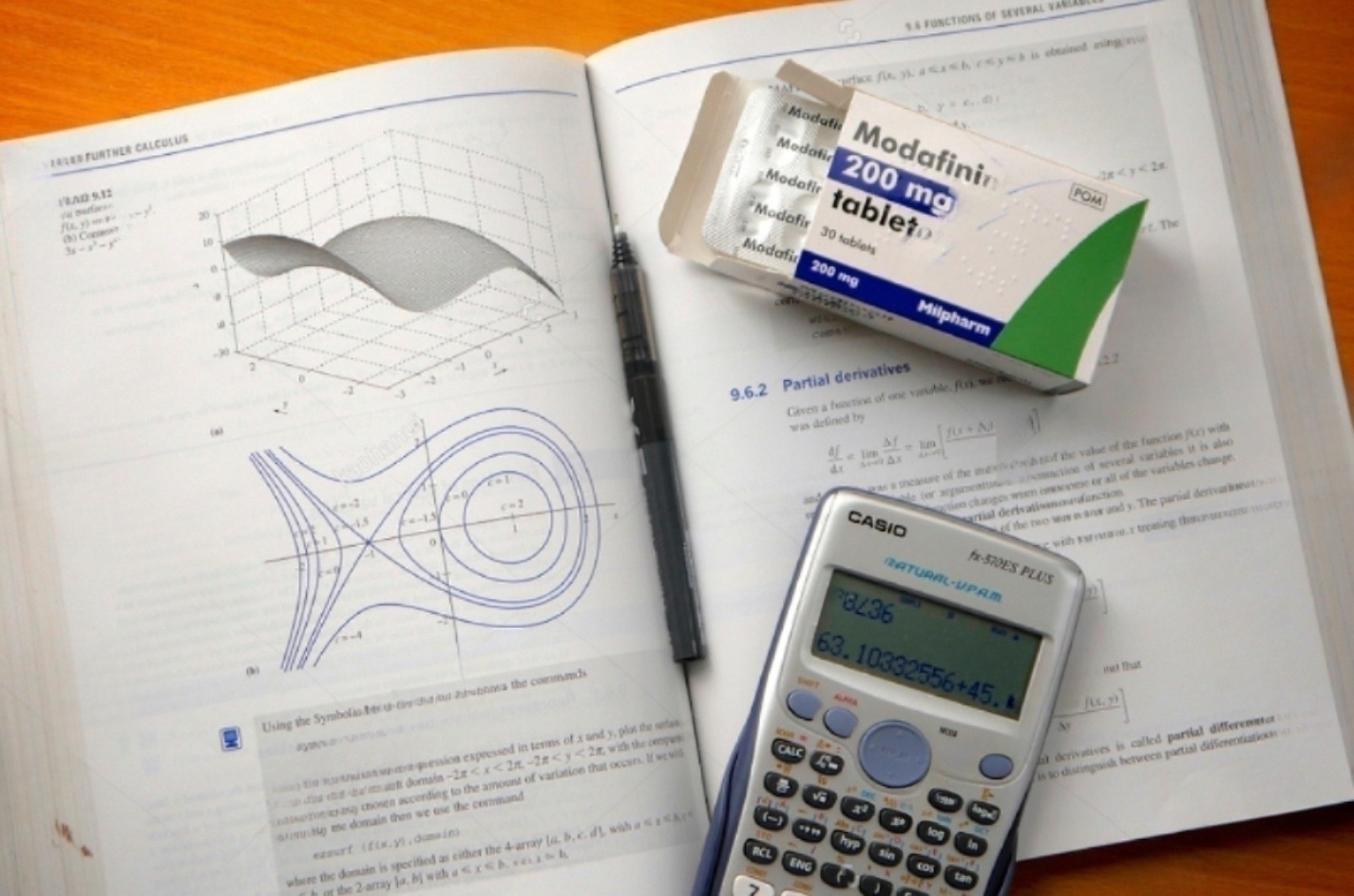
Modafinil
✨ Quality Assured: From trusted manufacturers.
✨ Private Packaging: Discreet delivery.
✨ Fast & Free Shipping: On all orders.
Rapid transit, sealed with care
Your privacy, our priority
Your concerns, addressed anytime
Quality partnerships, superior products

Modafinil and Armodafinil, today’s vanguards of cognitive enhancement, have extended their influence beyond their original intent of treating sleep disorders.
First introduced in France during the late 1970s, Modafinil primarily targeted narcolepsy 1. Its more potent relative, Armodafinil, secured FDA approval a few decades later in 2007 2. Now, their influence isn’t just medical; it spans broader horizons, enhancing attention, memory, and vigour.
These compounds enhance wakefulness by affecting neurotransmitters such as dopamine and norepinephrine, which govern mood, focus, and alertness 3. Their edge over traditional stimulants is evident: they offer benefits without the typical \”crash\” and exhibit a lower potential for addiction 4.
Starting with healthcare and tech professionals, these nootropics soon became popular among students 5. Currently, their appeal is universal, aiding everyone from creative minds to elite athletes.
Despite their appeal, these drugs carry potential side effects such as headaches, dizziness, and insomnia 6. It’s essential for potential users to consult healthcare professionals and familiarize themselves with possible repercussions.
In the world of cognitive enhancers, Modafinil and Armodafinil distinguish themselves through their researched efficacy and reliability, balancing cognitive enhancement with safety 7.
With cognitive prowess becoming synonymous with success, Modafinil and Armodafinil’s relevance is undeniable. They promise enhanced performance but mandate judicious and responsible use.

Modafinil and Armodafinil have ushered in a new era of cognitive enhancement. Celebrated for their positive effects on wakefulness and cognition, these compounds are hailed as a boon for many seeking to optimize brain function. This article explores the sophisticated mechanisms through which these compounds interact with the brain, highlighting their groundbreaking benefits.
Both Modafinil and Armodafinil owe their prowess to their nuanced interactions with brain neurotransmitters. They primarily influence dopamine, serotonin, and norepinephrine levels, ensuring an optimal balance for cognitive performance1.
Beyond its wakefulness-promoting effects, Modafinil has been observed to elevate extracellular dopamine levels by inhibiting the dopamine transporter2. This neurotransmitter modulation has profound effects on focus, alertness, and cognitive processing. Moreover, Modafinil’s interaction with the orexin system further establishes its role in wakefulness and arousal3.
Armodafinil, the enantiopure form of Modafinil, offers the advantage of longer efficacy. Similar to Modafinil, it modulates neurotransmitters, with an emphasis on dopamine, ensuring sustained cognitive enhancement and wakefulness4.
Multiple studies underscore the cognitive benefits of these compounds. They enhance neural connectivity, promoting fluid communication between brain regions, which is crucial for analytical thinking and task-related focus5. Furthermore, they have shown promise in bolstering memory consolidation and optimizing working memory6.
Beyond cognition, Modafinil and Armodafinil have a favorable impact on mood and motivation. Their influence on serotonin and other mood-related neurotransmitters can potentially uplift spirits, making them valuable tools for those aiming for emotional and mental excellence7.
The majority of users find Modafinil and Armodafinil to be well-tolerated, with side effects being relatively rare. Of course, it’s always prudent for those considering these nootropics to consult healthcare professionals for personalized guidance.
The pioneering effects of Modafinil and Armodafinil on the brain are truly commendable. Through nuanced interactions with neurotransmitters and neural pathways, they offer enhanced cognition, mood, and motivation. As with any compound, responsible use is key, but for those seeking cognitive and emotional optimization, these modern-day nootropics present a promising avenue.
For a deeper dive, academic research and clinical studies on these compounds are invaluable, promising a future where cognitive enhancement is both safe and profoundly effective.

Modafinil and Armodafinil have emerged as prominent players in the realm of cognitive enhancement, earning acclaim for their wakefulness-promoting and cognitive-enhancing properties. While these compounds harbor great potential, it is imperative to delve into their safety profiles to comprehend the associated risks and side effects fully.
Modafinil and Armodafinil belong to a class of drugs known as eugeroics or wakefulness-promoting agents. They are FDA-approved for conditions such as narcolepsy and shift work sleep disorder, and they enhance alertness without the jitteriness associated with traditional stimulants. Given their growing popularity, particularly among students and professionals, understanding their side effect profile is crucial.
Most individuals tolerate Modafinil and Armodafinil well, but they can cause side effects. The most commonly reported side effects include headache, nausea, anxiety, dizziness, and insomnia1. These are usually mild and transient, resolving on their own or with minimal intervention.
While rare, serious side effects can occur. These include severe skin reactions, hypersensitivity reactions, psychiatric symptoms, and cardiovascular effects2. Individuals experiencing severe symptoms such as rash, chest pain, or psychological disturbances should seek immediate medical attention.
The enhancement of wakefulness and cognition by Modafinil and Armodafinil can lead to their misuse, particularly in high-stress environments like academia or competitive workplaces. There is a potential for dependence, especially when taken in high doses or over extended periods3. The DEA classifies Modafinil as a Schedule IV controlled substance, indicative of its low but present potential for abuse and dependence.
Modafinil and Armodafinil can interact with other medications, affecting their efficacy or increasing the risk of adverse effects4. Notably, they can reduce the effectiveness of hormonal contraceptives, necessitating additional precautionary measures. A thorough consultation with healthcare providers is essential to identify potential interactions and adjust dosages accordingly.
Before embarking on the use of these nootropics, a comprehensive assessment considering medical history, existing health conditions, and concurrent medications is paramount. Pregnant or breastfeeding women and individuals with pre-existing heart conditions should exercise caution5. Appropriate dosages should be adhered to, and any emerging side effects should prompt a review by healthcare providers.
The effects of Modafinil and Armodafinil can vary significantly among individuals. Some may experience pronounced benefits with minimal side effects, while others may encounter discomfort or limited improvement in wakefulness and cognition. A trial period can help in assessing individual responsiveness and tolerability.
Modafinil and Armodafinil are groundbreaking in their ability to promote wakefulness and enhance cognition. Their potential to improve quality of life and productivity is undeniable. However, a nuanced understanding of their safety profile, potential side effects, and risks is essential to ensure responsible and informed use. A proactive approach involving careful consideration, adherence to recommended dosages, and prompt response to adverse effects will maximize benefits while mitigating risks associated with these modern-day nootropics.
Before considering Modafinil or Armodafinil for cognitive enhancement or any other off-label use, a detailed discussion with a healthcare provider is indispensable to navigate individual suitability and potential risks effectively.